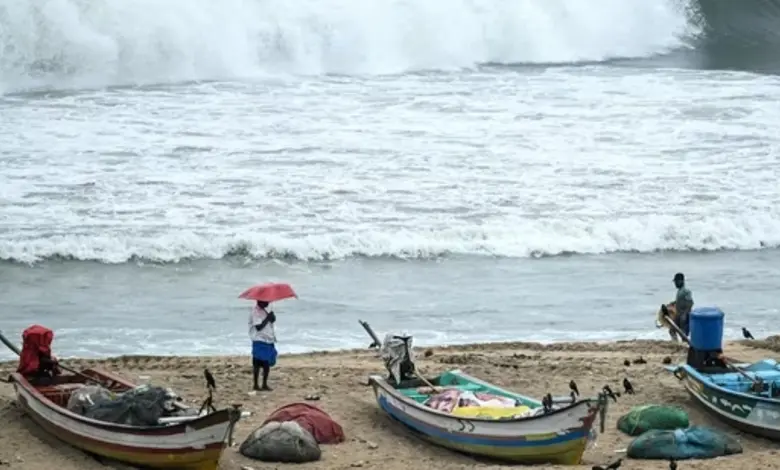Visakhapatnam – The inaugural cyclonic disturbance of the season, dubbed Montha, churned relentlessly across the west-central Bay of Bengal on Monday, barreling north-northwest toward the Andhra Pradesh coastline. Meteorological forecasts indicate the system will escalate into a severe cyclonic storm, poised to slam ashore near Kakinada around midnight Tuesday, before veering inland between Machilipatnam and Kalingapatnam, ultimately pushing into southern Odisha.
Packed with ferocious winds clocking 90-100 kilometers per hour—gusts surging as high as 110 kmph—the storm threatens widespread disruption along the eastern seaboard. Andhra Pradesh authorities have mobilized swiftly, placing districts including Kakinada, Konaseema, West Godavari, Eluru, and East Godavari under heightened vigilance. Chief Minister N. Chandrababu Naidu issued a firm directive to district officials: zero tolerance for cyclone-induced fatalities, underscoring a commitment to airtight preparedness.
In a high-stakes coordination meeting at the Kakinada collectorate, Civil Supplies Minister Nadendla Manohar, overseeing Eluru district, outlined the robust response framework. “We’ve established 269 rehabilitation shelters equipped with full amenities,” he stated, emphasizing the deployment of 30 National Disaster Response Force (NDRF) teams and 50 State Disaster Response Force (SDRF) units. Heavy machinery such as earthmovers and tractors stand ready, fueled and primed, alongside generators stocked for prolonged outages. Proactive measures extended to evacuating nearly 140 pregnant women from at-risk villages to nearby hospitals, while stockpiles of essentials and medications ensure continuity of care.
To safeguard lives, all educational institutions through Wednesday have been shuttered, and fishing vessels ordered back to port, clearing the seas of potential peril. Red and orange alerts blanket 23 districts, signaling the gravity of impending impacts from gale-force winds and torrential downpours.
Beyond Andhra’s vulnerable shores, the ripple effects loom large. Southern coastal pockets of Odisha brace for intense rainfall and blustery conditions, prompting preemptive evacuations of 3,000 residents from low-lying zones. Among them, 1,496 expectant mothers in late-term pregnancies were relocated to medical facilities amid scattered showers already lashing Bhubaneswar and southern regions. Odisha’s administration activated 140 specialized squads from NDRF, Odisha Disaster Rapid Action Force (ODRAF), and fire services, while suspending schools and anganwadi centers in eight high-risk districts until Thursday. Vigilance intensifies over Gajapati, Rayagada, Koraput, and Malkangiri, where landslide threats add another layer of urgency.
ALSO READ : Odisha: Cyclone Montha Set to Slam East Coast Amid Heightened Vigilance
Further south, Tamil Nadu’s northern expanses, encompassing Chennai, anticipate substantial precipitation, with weather stations urging residents to stay indoors and monitor updates closely. As Montha’s path crystallizes, a dual-cyclone scenario emerges elsewhere: another system brews in the Arabian Sea, though its trajectory remains under scrutiny. The Indian Meteorological Department (IMD) and allied agencies continue round-the-clock tracking, issuing timely advisories to mitigate the storm’s wrath.
This unfolding crisis highlights the relentless rhythm of monsoon fury, testing the resilience of coastal communities long schooled in such tempests. With armies of responders on standby—from the Army and NDRF to local fire crews—the focus remains unwavering: protect every life in harm’s way. As nightfall approaches, eyes across the region fix on Kakinada, where the first fierce howls of Montha will soon break the uneasy calm.
